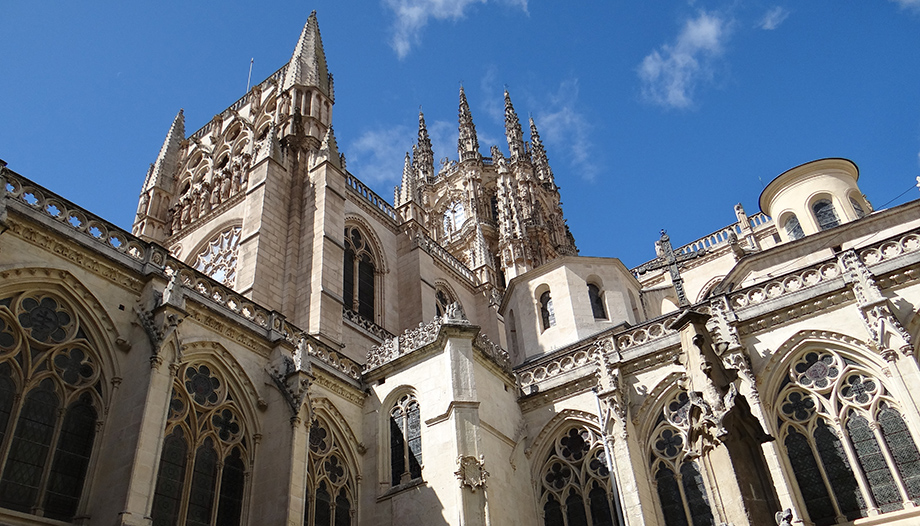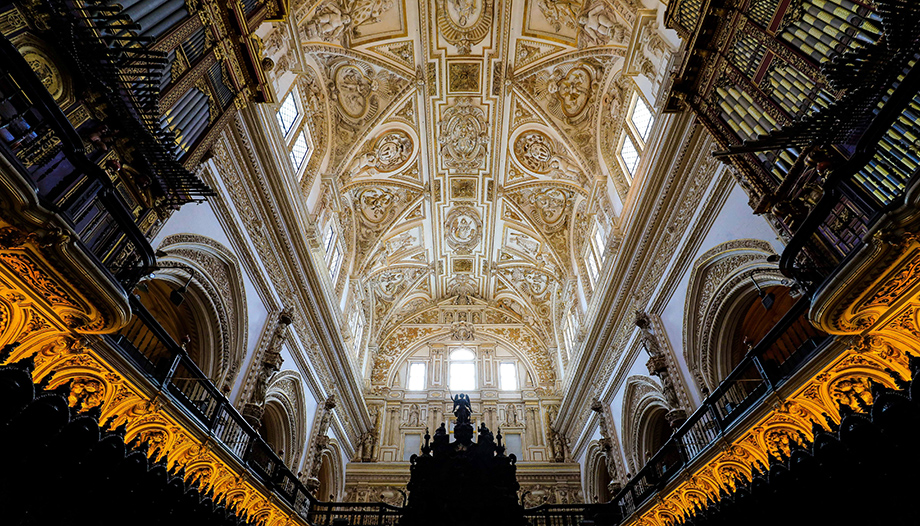According to the data collected in the Annual Report of Activities of the Church, the Church owns 3,290 properties catalogued as Cultural Interest Assets (BIC) in our country. In fact, in 500 municipalities the only BIC that exists is ecclesiastical. Tourism is its main source of income, money which is used to pay the workers of these buildings, to carry out their conservation and to contribute, for example, to numerous charitable works through foundations, etc.
Cultural heritage has a liturgical, evangelizing and pastoral purpose, explains the Spanish Episcopal Conference. The Church is aware of the interest it arouses, and makes it available to all, undertaking each year the maintenance necessary for its preservation. In 2019, Spanish dioceses allocated 61.9 million euros to 486 construction, conservation and rehabilitation projects. In the last six years, this figure rose to 459 million euros.
Among the many negative consequences of the Covid pandemic, which has lasted for more than a year, the closure of these temples to tourist visits has been one of them, with the consequent consequences, in economic terms, of labor instability of the staff, drop in income and other problems.
With sanitary safety
Gradually, however, light is beginning to enter through the open doors of monuments and cathedrals. Omnes has contacted ArtiSplendorewhich is dedicated to the tourist and cultural accompaniment of more than 50 monuments in Spain and Italy, and confirms that the visits will be resumed progressively throughout the month of May, "always in accordance with compliance with the health measures of each Autonomous Community (only the opening of Bilbao and Zaragoza remains to be determined)".
Antonio Miguel OrtizThe company's director of communication, content and editorial, explains that "we recommend the purchase of tickets through the website to avoid queues and waiting, in addition to the general safety requirements, such as the use of masks, hydroalcoholic gel or maintaining a safe distance. On the other hand, the staff has taken measures such as disinfecting the audio guide device after use to ensure the safety of all users".
ArtiSplendore advises on cultural and touristic aspects to numerous "cathedrals and churches, among which are the cathedrals of Guadix, Bilbao, Zaragoza, Ourense, Málaga, Ávila, La Laguna, Cáceres, Jerez, Mondoñedo, Almería, Baeza, Cádiz, Jaén, Lugo, Sigüenza, Salamanca and Astorga". Other outstanding religious monuments that accompany them culturally are "the Hospital de los Venerables in Seville, the Sacra Capilla del Salvador in Úbeda, the Basilica of San Juan de Dios in Granada, and the churches of San Vicente and Santo Tomás in Ávila. And although not in a comprehensive manner, the cathedrals of Burgos, León, Tui, Seville, etc., have been entrusted to the services of the company".
#YoSupportNationalTourism
"The openings have started, in principle, with weekend hours, although it is expected to be extended hours depending on the de-escalation and the phase of the pandemic in which we find ourselves," adds Antonio Miguel Ortiz. On the other hand, "the #YoApoyoTurismoNacional campaign has been established, which has been joined by dozens of monuments throughout Spain, whose purpose is to encourage visitors to bet on national tourist destinations, not only to discover the beauty and heritage offered by the national territory, but to support the sector, the great economic engine of our country, and to favor its recovery after this unprecedented crisis".
Religious art
In the ranking of Spanish cathedrals and temples by number of visitors in 2019, among the first are the Sagrada Familia in Barcelona, the cathedrals of Toledo, Seville and Cordoba, that of Santiago de Compostela, due to the pull of the Camino de Santiago, the cathedral of Burgos, the basilica of Pilar in Zaragoza, the Almudena in Madrid, those of Avila and Leon, or that of Sigüenza.
The dean of the cathedral of Sigüenza, Jesús de las Heras, describes it thus in his Youtube channelYou are going to find the tenth best cathedral in Spain, with a cathedral fortress of great beauty, in a journey through the last 900 years of the history of Christian art. You are going to find the Doncel of Sigüenza, with the Sacristy of the Heads, with the altarpiece of Santa Librada, with its cloister, with the tapestries, with the Main Chapel... You are going to find extraordinary religious art. I leave you while you see the towers of our cathedral, which give it its nickname, the fortis seguntina. A fortress to overcome the pandemic definitively and desirably. I'll be waiting for you in Sigüenza!"
– Supernatural Sagrada Familia in Barcelona and the Alhambra in Granada compete for the leadership of the most visited monuments in Spain, with an average of four and a half million people a year, before the pandemic. However, Gaudí's Sagrada Familia is still closed at the time of writing, so it offers the alternative of virtual tours to enjoy the experience from home.
The Sagrada Familia closed its doors to the public on November 30, 2020, and announced on its website that "the Board temporarily closes visits to the Basilica due to the lack of a stable number of visitors. We hope to return to normal as soon as possible".
As for religious worship and the usual masses, the basilica has also "opted for prudence to avoid contagion, and will wait a few weeks before starting the usual masses inside".
Toledo, Seville, Cordoba, Santiago, Burgos...
The following are practical issues to consider in relation to other Spanish cathedrals with large numbers of visitors:
Toledo.- The official website of the Primate Cathedral of Toledo announces the reopening of the tourist visits to the temple only on weekends, Saturdays and Sundays. Tickets can be purchased at La Tienda de la Catedral (in front of the Puerta Llana). Visits during the week are still possible, but there are certain restrictions to respect sanitary measures. In addition, the cathedral continues with its usual schedule of masses. All the information is detailed and available at official website.
This year, due to health restrictions, there will be no procession on Corpus Christi Thursday, June 3, although the city will be decorated and the people of Toledo will be able to contemplate the Monstrance that will hold the Blessed Sacrament on that day.
Seville. The Cathedral of Seville has also reactivated the cultural visit to the temple and the Giralda from May 10, "taking into account the limitations of capacity and with extraordinary security measures, thus responding to the high demand of residents and outsiders in their desire to visit the Metropolitan temple and its bell tower". In addition, in its web page they include the mass schedules in the different chapels of the Cathedral.
As for general visits, two types of guided tours are offered this season: daytime and nighttime visits to the roofs of the cathedral, and assisted visits to the cathedral and Giralda, both of which have been very well received by the public.
In this last modality, the Metropolitan Chapter offers the unique opportunity to visit the Cathedral, in small groups, during non-public hours and with the novelty of being able to contemplate the main altarpiece from inside the great main chapel, as well as the choir.
The celebration of Corpus Christi in the Cathedral, for the second consecutive year, will have to be adapted to the circumstances of the pandemic. The guarantees of safety, prevention and hygiene are a priority, hence the precautions will be taken in all events.
Cordoba. The Mosque-Cathedral of Cordoba has also been adapted to the sanitary measures, in order to be able to continue with the tourist visits, since last April 30. The visits to the Mosque-Cathedral are the only ones currently allowed according to the health protocol, while those of the Bell Tower have been temporarily suspended. As for worship schedules, the cathedral has implemented a system to consult the schedule of masses (and also visits) according to the specific day you want to go.
Santiago de Compostela. The Cathedral of Santiago de Compostela offers the possibility of visiting the temple and the tomb of the Apostle Santiago every day of the week; however, the Museum and the Archive-Library are temporarily closed. In addition, the Portico de la Gloria can also be visited since mid-April. As for the hours of worship, On their official website you can access the Mass schedules in Spanish and other languages, as well as the liturgical calendar for 2020-2021.

Burgos. The Cathedral of Burgos has reactivated the tourist visits to the temple announcing a series of dates and temporary schedules, mainly the next weekends of May in continuous schedule all day. Regarding the mass schedule, from June 8 there will be a new schedule, available in its web page. In addition, the cathedral offers a series of recommendations to attend worship, respecting the sanitary measures.
The cathedral of Burgos, which in 2019 became the sixth in Spain by number of visitors, celebrates next July 20 the VIII Centenary of the placement of the first stone by Bishop Mauricio and King Ferdinand III the Saint, in a commemorative program that will last until 2022.
Otherwise, the Jubilee Year granted by the Holy See to the Archdiocese of Burgos, which began on November 7, 2020 with the motto 'You are God's temple', will end on November 7, 2021.







